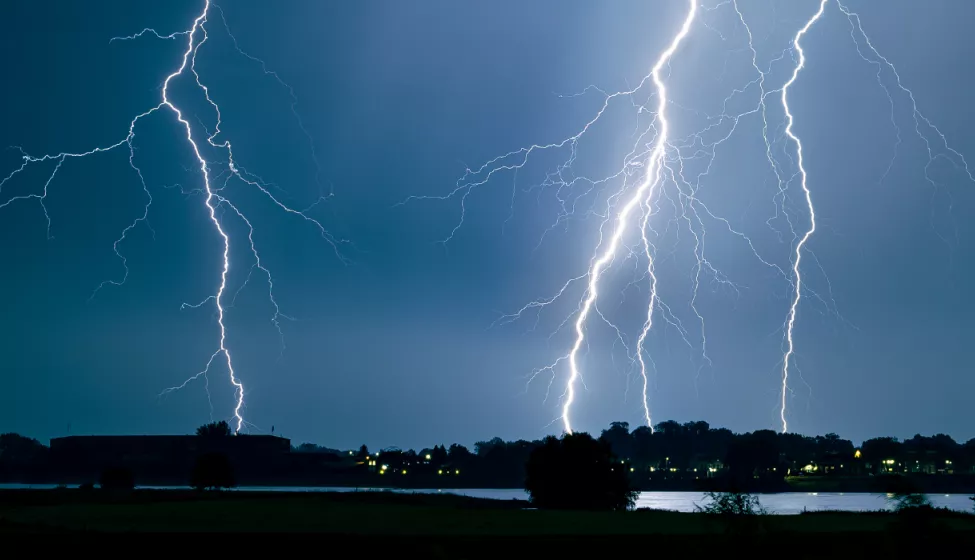May 27, 2021
The prevalence of smart home devices and appliances in the U.S. has grown steadily in recent years. By 2025, experts predict that more than 75 million households, or 57%, will have connected devices such as cameras, thermostats, alarms, lighting, refrigerators, or washer and dryer units.
While smart home devices and appliances offer increased convenience, functionality, and energy efficiency, their interconnectedness can also make them more susceptible to costly lightning damage, because voltage surges caused by lightning strikes can impact multiple devices and appliances at once across a home's electronic network. This explains why the average cost of lightning-caused insurance claims in the U.S. rose 11% from 2017 to 2019 despite a decrease in the total number of related claims.
Smart Home Devices
As the investigation of lightning-caused insurance claims can be complex, we recommend that insurers partner with multi-disciplinary teams of engineers and scientists to determine the root cause of failure in smart home and other electronic devices. Doing so can help insurers accurately assess claims and provide important suggestions to homeowners for mitigating future lightning-related risks.
A Direct or Indirect Strike?
Investigating whether certain smart home devices have been damaged by lightning strikes can be challenging. As opposed to a direct strike, where fire is often the primary cause of damage, indirect lightning strikes may not leave overt visible evidence.
When lightning strikes a neighboring tree, utility pole, or another object near the home, it can cause higher than normal voltages on the electrical conductors that connect to the home's structure. Energy can travel on any of the attached power lines (line, neutral, ground) — or on coaxial or ethernet cable — and lead to voltage surges at electrical outlets or communication ports in the home.
Once inside the home, a surge from a lightning strike can cause a fire in the wiring behind walls or in ceilings and damage sockets, switches, fixtures, electronics, and appliances. Even when a fire is avoided, abnormal voltages can still damage sensitive electronic components integral to smart devices and appliances. Unfortunately, when non-fire-related damage from an indirect lightning strike occurs, the only indication may be that devices no longer function as expected.
When smart device damage occurs, it is important for investigators to review lightning strike reports to confirm whether a strike occurred nearby within the timeline in question. As with any forensic investigation, it is also important to collect witness statements. Did the home's occupants observe abnormal electrical behavior, such as lights flickering, before realizing their devices no longer functioned? Did they smell burnt plastic, an indication that a surge may have led to overcurrents and heating of circuit wire insulation?
Once witness statements are collected, investigators can assess the electrical service equipment, branch and feeder circuits, ground-fault circuit interrupter (GFRI) and arc-fault circuit interrupter (AFCI) equipment, and outlets. Testing damaged branch circuits should include insulation resistance measurements (megger measurements) and other electrical measurements to evaluate whether damage to electrical wiring has occurred.
Device by Device
When smart home devices have failed due to a suspected lightning strike, it is important to analyze each device on a case-by-case basis. A record should be made of which branch circuit each device was plugged into and whether the device was operated from a power strip that included a surge protection device (SPD).
While SPDs are not a failsafe, they can be critical tools for helping to mitigate damage from indirect lightning strikes. The most common SPDs contain metal oxide varistors that limit transient overvoltage by diverting or shunting surge current to the ground. If SPD systems have been installed in the home, it is important for investigators to evaluate all of them. This should include confirmation of proper equipment listing and correct installation. It should also include inspection of the grounding and bonding of the structure, two critical components for correct functionality of the SPD.
In 2020, the National Electric Code (230.67) published by the National Fire Protection Association added a requirement for the use of surge protection in dwellings. An SPD installed at the electrical service of a structure can help protect all building circuits, including appliances, outlets, and lighting. With proper bonding, it can also protect coaxial and ethernet connections to modems, routers, and other connected equipment.
How Exponent Can Help
Exponent's multidisciplinary team of materials scientists and electrical and thermal engineers can help insurance companies investigate complex insurance claims related to lightning strikes. We can also conduct non-destructive imaging or destructive analysis to determine the root cause of failure in smart home and other electronic devices.


